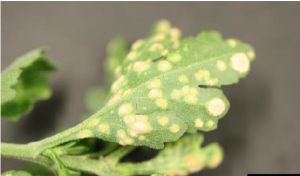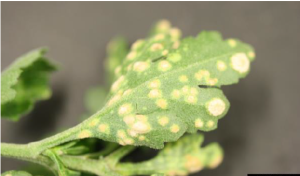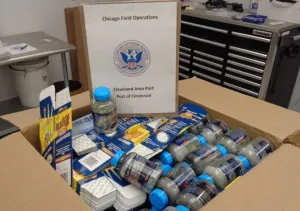
SAN DIEGO – With Mother’s Day quickly approaching, U.S. Customs and Border Protection agriculture specialists want to remind the traveling public of the restrictions on certain commodities imported from Mexico.
Mother’s Day is one of the busiest times of year for flower imports, which can carry pests and diseases that threaten U.S. agriculture and the environment. Certain flowers, greenery, potted plants, and soil are prohibited to prevent the introduction of plant diseases, invasive insects, and parasitic nematodes. By their destructiveness, invasive plant diseases and pests reduce the quality of ornamental plants and crops, and cost millions in eradication efforts and export trade restrictions.
Chrysanthemums from Mexico are prohibited through the passenger ports of entry. Travelers cannot bring arrangements with these flowers into the country. With the current restrictions, CBP is trying to prevent fungi, such as “Chrysanthemum White Rust” from entering the United States, as this disease could put flower growers in jeopardy. Plants for propagation require a permit to enter the U.S., and soil is prohibited to prevent the introduction of soil pests.
While a relatively small number of harmful pests are found among the millions of stems inspected by CBP, a single dangerous pest could cause millions of dollars of damage to our nation’s crops.
“Our CBP agriculture specialists are carefully inspecting cut flowers and other plant material to ensure they are pest-free and protect the U.S. agriculture industry, which is crucial for ensuring economic vitality” said Mariza Marin, Port Director for the San Ysidro Port of Entry. “To avoid delays or fines, we encourage travelers to declare all flowers being brought into the U.S.”
CBP recommends travelers who wish to import flowers, plant materials, and other agricultural items consult the CBP Info Center section on the CBP website before they travel.
Travelers should always declare all items they have acquired abroad to CBP officers to avoid civil or criminal penalties and reduce the risk of introducing pests and disease to the U.S. ecosystem. For more information on prohibited/restricted items, visit CBP’s Know Before You Go website.
All travelers can monitor wait times by visiting CBP’s Border Wait Time (BWT) web page or download the BWT app via Google Play or the Apple App Store.
Follow the Director of CBP’s San Diego Field Office on Twitter at @DFOSanDiegoCA for breaking news, current events, human interest stories and photos.






